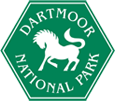Swaling
Controlled burning on Dartmoor
Dartmoor has been a stock grazing area since prehistoric settlers first brought their livestock here thousands of years ago. Their actions and the actions of their descendants have helped shape the landscape and character of Dartmoor down through the ages contributing to what makes Dartmoor special and worthy of National Park status.
Today over 90% of the land within the National Park boundary is used for farming. Much of this area is either open moorland (common) where livestock is grazed by commoners (farmers who have rights to use the common), or enclosed moorland. The remainder is made up of enclosed farmland which mainly comprises improved grassland. In addition, woods, shelterbelts, wetlands, rough pasture, traditional buildings and archaeological features all contribute to the character of the farmed land.
Overgrown vegetation on open moorland restricts public access and, during the warmer months, presents a significant risk of wildfires. These wildfires are difficult to control and can burn for many days destroying vast areas of the fragile environment, threatening wildlife, grazing animals and potentially human life and property. The land owners, and on common land, the commoners are allowed to carry out controlled burning (swaling) of moorland vegetation. This helps manage vegetation on overgrown heathland and clears the ground of dead vegetation so that new growth can appear.
When does swaling take place?
Nationally controlled burning takes place between 1 October and 15 April. On Dartmoor a voluntary code ends burning on the 31 March to allow for the ground nesting bird season.
How is it controlled?
Sites to be swaled will have planned fire breaks cut or have other natural boundaries like tracks or walls to facilitate safe extinguishment. Throughout the duration of the swale commoners will be in attendance appropriately equipped. The sites chosen to be swaled are notified to various agencies in compliance with the Heather and Grass Burning code.
Dartmoor National Park Authority, through the Ranger Service, supports legal swaling by providing signs and practical assistance and, as part of a partnership approach, the Devon and Somerset Fire and Rescue Service undertakes a roving inspection of planned swales and liaises with commoners and Rangers on site.
Please see the Swaling code of conduct for further guidance.
